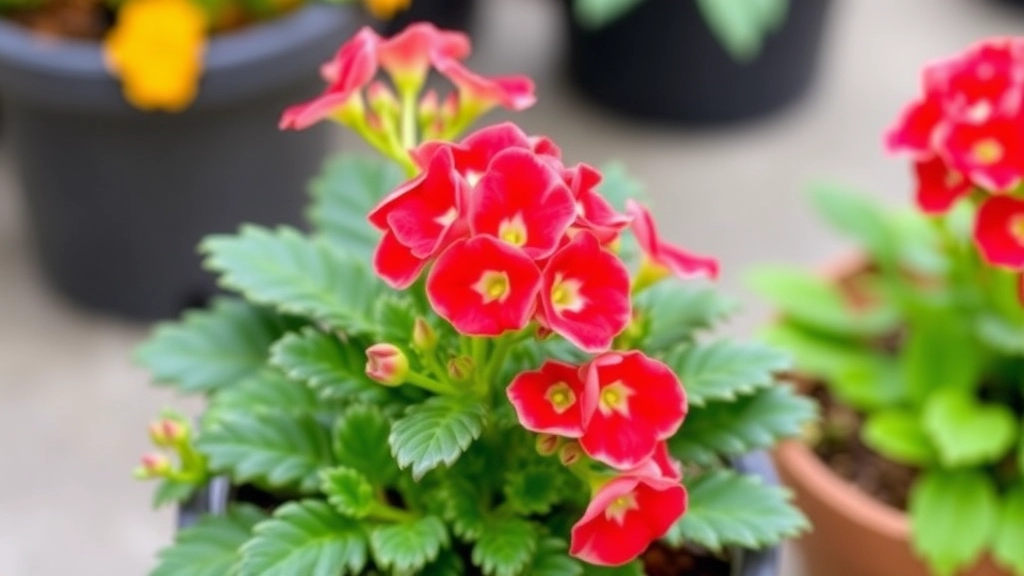Keeping Your Florist Kalanchoe Plant Thriving
If you’re looking to keep your Florist Kalanchoe Plant thriving, you’ve come to the right place. This popular flowering succulent, often found in floral shops, is known for its vibrant blooms and easy care. In this guide, I’ll share practical tips on ideal light conditions, watering schedules, and more to help your Kalanchoe flourish indoors.
Understanding Kalanchoe Care
Understanding the basics of Kalanchoe care is crucial for encouraging reblooming and maintaining healthy growth. From soil and potting mix recommendations to pest control strategies, I’ll cover everything you need to know. Let’s dive into the essentials to ensure your Florist Kalanchoe Plant stays beautiful and vibrant all year round.
When it comes to growing a healthy Florist Kalanchoe, light conditions are paramount. Many plant enthusiasts often wonder: How much light does my Kalanchoe need?
Florist Kalanchoe thrives in bright, indirect sunlight. Here’s what you should know:
– **Optimal Light Exposure**: Aim for 6 hours of bright, indirect sunlight each day. A south-facing window is ideal.
– **Avoid Direct Sunlight**: While Kalanchoe enjoys light, harsh, direct sunlight can scorch its leaves.
– **Signs of Insufficient Light**: If your plant becomes leggy or its leaves start to drop, it’s a sign it’s not getting enough light.
– **Adjusting for Seasons**: During winter months, ensure your plant still receives adequate light, as days are shorter.
For more detailed care tips, you might find the [Florist Kalanchoe Pink Care Tips and Buying Guide](https://planthq.org/florist-kalanchoe-pink-care-tips-and-buying-guide/) helpful. Additionally, if you’re dealing with specific issues like your Kalanchoe not flowering, check out this [guide on why your Florist Kalanchoe is not flowering and solutions](https://planthq.org/why-your-florist-kalanchoe-is-not-flowering-solutions-and-tips/).
Watering Schedule for Healthy Growth
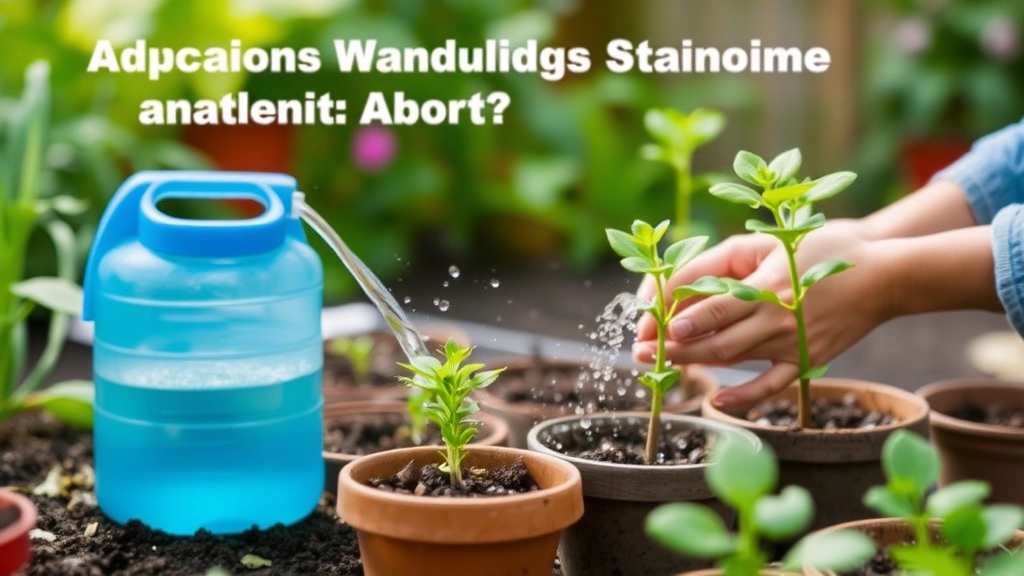
So, you’ve got your gorgeous Florist Kalanchoe, and now you’re wondering, “How often should I water this beauty?”
Watering is crucial for keeping your Kalanchoe thriving.
Here’s the deal:
- Frequency: Water your Kalanchoe every 2-3 weeks.
- Check the Soil: Always poke your finger into the soil—if it feels dry an inch down, it’s time for a drink.
- Watering Method: Give it a good soak, allowing excess water to drain out. This helps prevent root rot.
- Seasonal Adjustments: In the winter, cut back on watering since the plant goes dormant.
I’ve learned the hard way that overwatering is a common mistake.
If you notice yellowing leaves or mushy stems, that’s a telltale sign you’re giving it too much water.
On the flip side, if the leaves are shrivelling, your Kalanchoe is thirsty.
Keeping a consistent watering schedule is key to a healthy plant.
Soil and Potting Mix Recommendations
Are you unsure about the best soil for your Florist Kalanchoe? Choosing the right potting mix is crucial for ensuring your plant thrives.
Ideal Soil Composition
Florist Kalanchoe prefers a well-draining soil that retains some moisture but does not become waterlogged. Here’s a simple breakdown of what to look for:
- Cactus or Succulent Mix: These mixes are specifically designed to provide excellent drainage.
- Perlite or Pumice: Adding these materials improves aeration and drainage. A mix of 50% potting soil and 50% perlite works wonders.
- Organic Matter: Incorporating some organic compost can enhance nutrient content while maintaining drainage.
Potting Considerations
When potting your Kalanchoe, keep these tips in mind:
Best Temperatures for Florist Kalanchoe
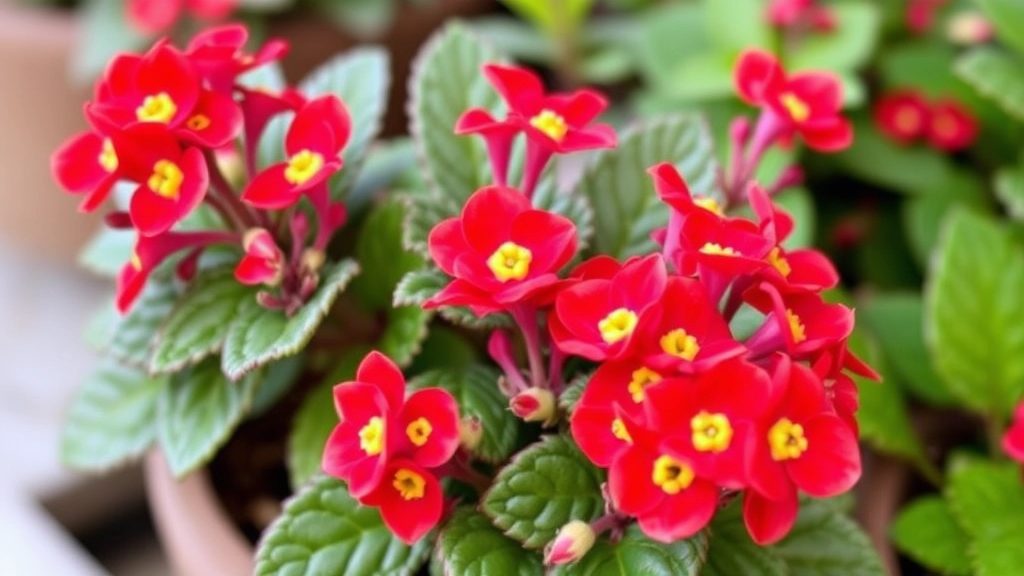
When caring for your Florist Kalanchoe, you might wonder about the ideal temperature conditions for optimal growth.
Temperature Range
Florist Kalanchoe thrives best in temperatures between 18°C and 24°C (65°F to 75°F).
Key Points to Consider:
- Daytime Temperatures: Aim for the higher end of the range during the day. This promotes vibrant growth and flowering.
- Nighttime Temperatures: A slight drop to around 15°C (59°F) at night can help simulate natural conditions and encourage blooming.
- Avoid Extremes: Sudden temperature changes or prolonged exposure to below 10°C (50°F) can stress the plant, leading to stunted growth or wilting.
Indoor vs. Outdoor Care
If you’re growing your Kalanchoe indoors, ensure it’s away from drafty windows or heating vents. Outdoors, place it in a sheltered area that receives ample sunlight but is protected from harsh winds.
Seasonal Considerations
During colder months, consider bringing your Kalanchoe indoors to maintain stable temperatures.
How to Encourage Florist Kalanchoe to Rebloom
Have you ever wondered why your Florist Kalanchoe stops blooming? It can be frustrating when you want to enjoy those vibrant flowers again. Fortunately, with the right care, you can encourage your Kalanchoe to rebloom beautifully.
Fertilization Tips for Florist Kalanchoe
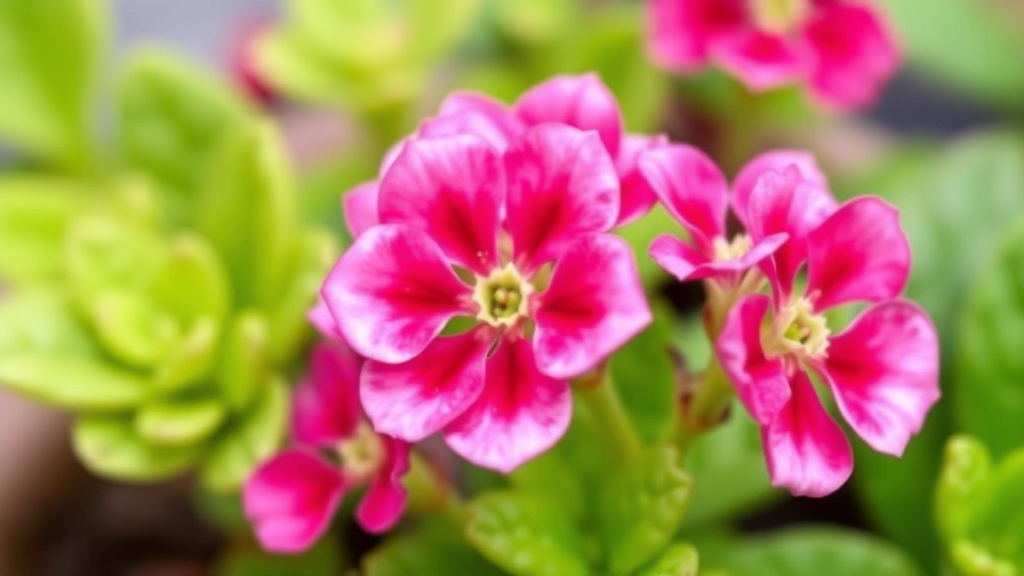
So, you’ve got your Florist Kalanchoe thriving, but how do you keep it looking its best? Fertilization is key to promoting vibrant blooms and lush foliage.
When to Fertilize
- Growing Season: During spring and summer, when your Kalanchoe is actively growing, it’s time to feed it.
- Frequency: Aim to fertilize every 4-6 weeks.
What to Use
- Balanced Fertilizer: A balanced, water-soluble fertilizer with an NPK ratio like 20-20-20 works wonders.
- Dilution: Always dilute to half strength; you don’t want to overwhelm your plant.
Tips for Application
- Water First: Give your Kalanchoe a good drink before applying fertilizer. This helps prevent root burn.
- Even Distribution: Apply evenly around the base, avoiding direct contact with the leaves.
Signs Your Kalanchoe Needs Fertilizer
- Pale Leaves: If the leaves start to look washed out, it’s a sign they’re craving nutrients.
- Slow Growth: If your plant seems to be stalling, a little feed might do the trick.
Remember, less is more. Over-fertilizing can lead to salt build-up, which can harm your plant.
Common Pests and How to Manage Them
As we delve deeper into the care of your Florist Kalanchoe, it’s crucial to address a common worry: pests. These little invaders can wreak havoc on your beautiful plants if left unchecked.
Identifying Common Pests
- Aphids: Tiny, green insects that cluster on new growth.
- Mealybugs: White, cotton-like pests that hide in leaf joints.
- Spider Mites: Tiny, red or black dots that cause webbing on leaves.
- Scale Insects: Hard, shell-like pests that attach themselves to stems and leaves.
Effective Management Strategies
- Regular Inspections: Check your Kalanchoe weekly for signs of pests.
- Natural Remedies:
- Neem Oil: A natural insecticide effective against many pests.
- Insecticidal Soap: Targeted and safe for indoor plants.
- Isolation: If you spot pests, isolate the affected plant to prevent spreading.
- Physical Removal: Use a damp cloth to wipe off pests or blast them off with water.
- Encourage Beneficial Insects: Ladybugs and lacewings can help control pest populations.
Preventative Measures
- Maintain Healthy Plants: A robust Kalanchoe is less susceptible to pests. For more detailed care tips, refer to this ultimate guide to Kalanchoe care.
- Avoid Overwatering: This can create a damp environment that attracts pests. Learn more about best practices in our watering tips guide.
- Proper Air Circulation: Ensure your plant has enough space to breathe.
Pruning and Maintenance for Fuller Growth
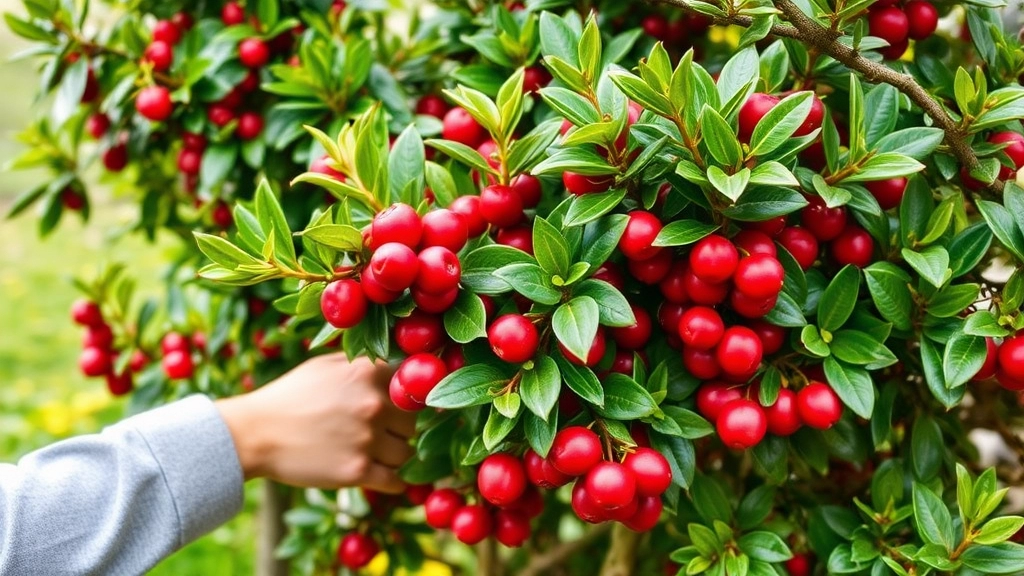
Are you wondering how to keep your Florist Kalanchoe looking lush and vibrant?
Pruning is your secret weapon.
Regular pruning not only encourages fuller growth but also helps your plant stay healthy and blooming beautifully.
Here’s how to do it:
- Timing is Key: The best time to prune is after the flowering period. This is when the plant is ready to focus on new growth.
- Tools Matter: Use clean, sharp scissors or pruning shears. This prevents infection and ensures clean cuts.
- Cut Wisely: Trim off spent flowers and any leggy stems. Aim to cut just above a leaf node. This encourages new branches to sprout.
- Remove Dead Leaves: Keep an eye out for any yellowing or dead leaves. Removing these not only improves appearance but also helps prevent pests.
- Shape It Up: Don’t be afraid to shape your Kalanchoe. A well-shaped plant is not just pretty; it promotes better air circulation.
- Frequency: A light prune every few weeks can keep your plant in check. Just don’t overdo it!
With a little care, your Florist Kalanchoe will reward you with fuller growth and vibrant blooms.
Propagation Methods for Florist Kalanchoe
As we delve deeper into the care of Florist Kalanchoe, understanding propagation can truly enhance your gardening experience. Many enthusiasts often wonder how to multiply their beloved plants effectively.
Propagation Techniques
- Leaf Cuttings
- Select healthy, mature leaves from the parent plant.
- Cut the leaves cleanly at the base.
- Allow the cut end to callous over for a day or two.
- Place the leaf in a well-draining potting mix, ensuring the cut end is buried slightly.
- Water sparingly until roots develop.
- Stem Cuttings
- Choose a healthy stem with several leaves.
- Cut the stem just below a leaf node.
- Remove the lower leaves to prevent rot.
- Allow the cutting to callous for a day.
- Plant in a suitable potting mix and water lightly.
- Offsets
- Look for small offsets or pups at the base of the parent plant.
- Gently separate them from the main plant.
- Replant them in their own pots with a suitable mix.
Tips for Successful Propagation
- Humidity: Maintain a humid environment to encourage rooting.
- Light: Place cuttings in bright, indirect light to prevent wilting.
- Patience: Allow several weeks for roots to develop before transplanting.
By applying these methods, you can easily expand your Kalanchoe collection or share with friends. For more detailed steps, you can refer to our step-by-step propagation guide. Additionally, for those interested in specific care tips for different varieties, check out our complete care guide for Kalanchoe Beharensis.
Seasonal Care and Transitioning Indoors
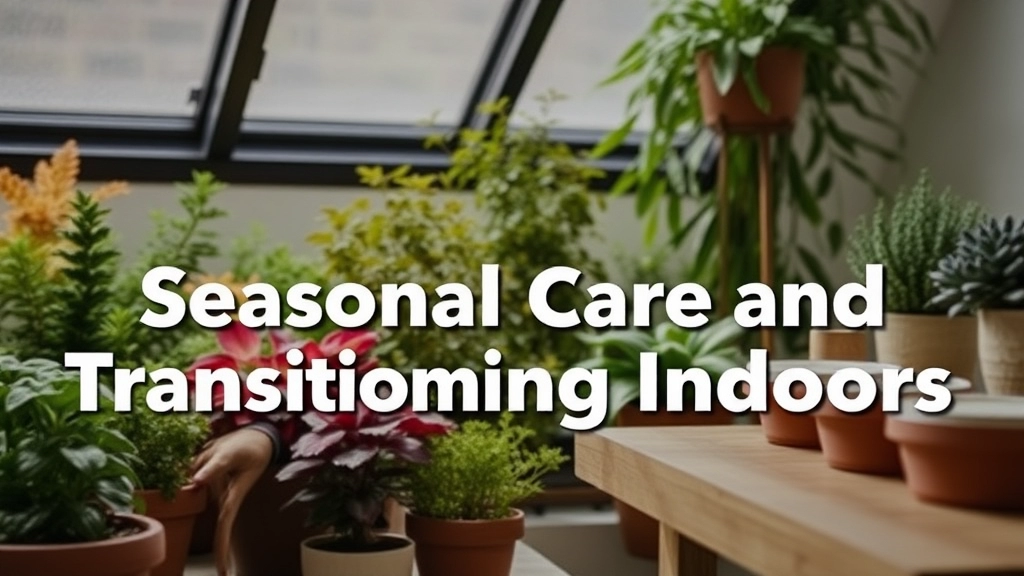
As the seasons shift, you might be wondering how to keep your Florist Kalanchoe thriving, especially when it’s time to bring it indoors.
Why Transitioning Matters
When the temperature drops, your Kalanchoe needs a little extra care to adapt to indoor life. Here’s how to make that transition smooth and keep your plant happy.
Steps for Seasonal Care:
- Timing is Everything:
- As autumn approaches, start preparing your Kalanchoe for indoor living.
- Ideally, transition it indoors before the first frost hits.
- Choose the Right Spot:
- Find a bright, sunny location near a window.
- Kalanchoes love light, so aim for at least 6 hours of indirect sunlight a day.
- Adjust Watering:
- Indoor air tends to be drier, so check the soil more frequently.
- Water only when the top inch feels dry, but avoid letting it sit in water.
- Humidity Levels:
- If your home is dry, consider using a humidity tray or a small humidifier.
- Kalanchoes appreciate a bit of moisture in the air.
- Monitor Temperature:
- Keep your Kalanchoe in a room that stays between 15-21°C (60-70°F).
- Avoid placing it near drafts or heating vents.
- Fertilize Sparingly:
- Reduce fertilization during the winter months.
- A diluted, balanced fertilizer once a month is sufficient.
Signs Your Kalanchoe Needs Attention:
- Yellowing leaves could indicate overwatering.
- Droopy stems might suggest it’s too dry or too cold.
Tips for Extending Flowering Time
After nurturing your Florist Kalanchoe with the right conditions, you may wonder how to keep those vibrant flowers blooming for as long as possible. Extending the flowering time of your Kalanchoe can be a rewarding experience, allowing you to enjoy its beauty throughout the season.
Here are some practical tips to help you achieve that:
- Optimal Light Exposure: Ensure your Kalanchoe receives plenty of bright, indirect sunlight. Too little light can cause the flowers to drop prematurely. Aim for at least 6 hours of light daily.
- Temperature Control: Maintain a stable temperature between 15°C to 21°C. Avoid sudden temperature changes, as they can stress the plant and lead to early flowering cessation.
- Watering Wisely: Allow the soil to dry out between waterings. Overwatering can lead to root rot, which can affect blooming. Water thoroughly, but ensure proper drainage.
- Regular Deadheading: Remove spent flowers promptly. This encourages the plant to focus its energy on producing new blooms rather than seed formation.
- Fertilisation Strategy: Use a balanced, water-soluble fertiliser every few weeks during the growing season. This will provide the necessary nutrients to support ongoing flowering.
- Pruning for Growth: After the blooming period, consider pruning back the plant to encourage fuller growth and more blooms in the next cycle.
For more detailed care tips, you can refer to our Florist Kalanchoe care guide and explore the ultimate guide to Kalanchoe Blossfeldiana hybrid care for additional insights.
Signs of Overwatering and How to Avoid Them
Ever looked at your Florist Kalanchoe and thought, âWhy are you drooping like that?â If you’re scratching your head, it might just be a case of overwatering.
Key Signs of Overwatering
- Yellowing Leaves: If the leaves start turning yellow, it’s a classic sign that your plant is getting too much water.
- Soft, Mushy Stems: Healthy stems should be firm. If they feel squishy, it’s time to reassess your watering routine.
- Wilting: Ironically, overwatered plants can also droop, mimicking the effects of underwatering.
- Root Rot: If you notice a foul smell coming from the soil, it could be a sign of root rot. Check those roots!
- Fungal Growth: White or black spots on the soil surface could mean you’ve got a fungal issue due to excess moisture.
How to Avoid Overwatering
- Check the Soil: Always stick your finger about an inch into the soil. If it feels damp, hold off on watering.
- Use Well-Draining Soil: A good potting mix with perlite or sand helps excess water escape. For more details, check out the best soil for Kalanchoe Blossfeldiana.
- Choose the Right Pot: Make sure your pot has drainage holes. If water can’t escape, your plant is at risk.
- Adjust Your Watering Schedule: Kalanchoes prefer to dry out a bit between waterings. Aim for once every couple of weeks, or when the soil feels dry. Learn more about caring for flowering Kalanchoe.
- Monitor Humidity: If your home is particularly humid, you might need to water less frequently.
FAQs on Florist Kalanchoe Plant Care
How often should I water my Florist Kalanchoe?
Water your Kalanchoe every 2-3 weeks. Always check the soil first; if it feels dry an inch down, it’s time to water. Overwatering can lead to root rot, so make sure excess water drains out.
What is the ideal temperature range for Florist Kalanchoe?
Florist Kalanchoe thrives best in temperatures between 18°C and 24°C (65°F to 75°F). During the day, aim for the higher end of the range, and at night, a slight drop to around 15°C (59°F) can encourage blooming.
How should I fertilize my Florist Kalanchoe?
During the growing season (spring and summer), fertilize every 4-6 weeks using a balanced, water-soluble fertilizer with an NPK ratio like 20-20-20. Always dilute to half strength and water the plant before applying fertilizer to prevent root burn.
When and how should I prune my Florist Kalanchoe?
Prune your Kalanchoe after the flowering period using clean, sharp scissors or pruning shears. Trim off spent flowers and leggy stems, cutting just above a leaf node. Regular pruning encourages fuller growth and better air circulation.
How do I transition my Florist Kalanchoe indoors for the winter?
Start preparing your Kalanchoe for indoor living as autumn approaches, ideally before the first frost. Place it in a bright, sunny location near a window with at least 6 hours of indirect sunlight a day. Adjust watering to indoor conditions, and monitor humidity and temperature levels to keep your plant happy.
What are the signs that my Florist Kalanchoe needs attention?
Yellowing leaves could indicate overwatering, while droopy stems might suggest the plant is too dry or too cold. Regularly check these signs to adjust your plant care routine accordingly.
References
-
Gardening Know How – Kalanchoe Plant Care
-
The Spruce – How to Grow Kalanchoe Indoors
-
The Old Farmer’s Almanac – Kalanchoe
